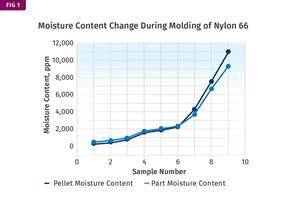‘Unique’ Characterizes Materials Category Finalists of SPE Auto Innovation Awards
Recycled carbon-fiber as a filler for PP; low-gloss low-squeak ABS for instrument panels; IP skin not weakened by scoring; and more.
This is my fourth in a series of blogs on the 2017 SPE Automotive Innovation Awards, including one that described the winners of the nine categories, followed by two blogs highlighting some of the finalists in the body exterior and body interior categories, and chassis/hardware and powertrain categories, and one that highlights one of the nine categories’—materials.
In having participated as a judge for the third consecutive year, and as the PT editor that covers materials and additives, the materials category always captures my attention. A key observation is that we see in these novel automotive applications a reflection of the evolution of materials technology on which we report on in a broader sense. Included are modified engineering thermoplastics, such as the winner of the materials category that involved the replacement of a nylon 66 with DSM’s nylon 46 modified with PTFE; recycled carbon-filled thermoplastic composites, low-gloss ABS; TPO bi-laminate film; and, unique PVC compounds with grain appearance. Take a look at the details:
ŌŚÅ Carbon Fiber Filled PP: Featured in the 2018 Ford Explorer SUV, is an“A” pillar bracket for which a new material was created to replace ASA. Fibermod CB061SY PP, a recycled carbon-fiber-filled PP from Austria’s Borealis Compounds (U.S. office in Port Murray, N.J.) can be used with existing tooling and is also compatible with a new soft TPE.
The carbon fiber is recycled from various sources including airplane bodies and bicycles. Injection molded by Tier I Windsor Mold Group, the resultant hard/soft material system is reportedly more cost effective for carbon fiber-based applications on exterior and interior trim parts. The new material usage resulted in a 14% component weight reduction and $186,000 annual savings.
ŌŚÅ Squeak-Resistant IP Cluster Bezel: Featured in the 2016 Ford Mustang, this instrument panel cluster was molded with a new, patented low-gloss ABS—Hushlloy HS301 from Summit Polymers. The material provides parts with a markedly lower coefficient of friction that eliminates squeak and “stick/slip” noises caused by interior components in a vehicle.
Twenty-two pieces of felt, 16 pieces of Mylar tapes and grease were eliminated in assembly, resulting in cost savings of $1.62/vehicle. There are nine commercialized applications in North America resulting in $4 million annual savings. This new material offers “no squeak” properties, drop in usage (replaces general-purpose ABS without need for tooling modifications), high flow for larger more difficult to mold parts, and is not additive based. The low-gloss appearance eliminates need for painting.
ŌŚÅ Non-Weakened Skin for Seamless Airbag System: Featured in the 2018 Ford EcoSport crossover SUV, this scoreless skin technology eliminates the visible line of the airbag door. A special bi-laminate foil with TPO chemistry for unique tensile, shear and processing characteristics enables an improved surface appearance over previous scored IP skin constructions.
Parts are injection molded with in-mold lamination. No high capital expenses ($750,000 cost avoidance) for laser-scoring equipment makes this doable globally in low-cost, low-tech countries. The previous process included injection molding the substrate, cutting and sewing and hand wrapping the top skin cover and laser scoring the composite panel. Streamlining the production results in a $1.50/part cost savings. Since the skin is not weakened by scoring, the underlying substrate can be made weaker to enhance the airbag deployment door opening time.
ŌŚÅ Grained Roof Ditch Moldings: These appear in GM’s 2017 GMC Sierra and Chevy Silverado pickups. Usually, a grain appearance in extruded parts is achieved via embossing rollers confining the look to the top surface of the part only. The unique PVC material development used—Teknor Apex’s Apex85—J438N Black 621 PVC/coextrusion—has the grain in the material enabling a grain appearance throughout the part, including the sides of the extrusion, without secondary operations required.
This enables greater styling options for interior and exterior part designs at less cost. A 10% direct cost savings is associated with this innovation through process efficiency and lower equipment maintenance costs. Approximately $30,000 of cost avoidance savings annually are directly associated with this innovation. It is scratch and mar resistant, weatherable, co-extrudable and it also bonds to metal.
Related Content
What's the Allowable Moisture Content in Nylons? It Depends: Part 2
Operating within guidelines from material suppliers can produce levels of polymer degradation. Get around it with better control over either the temperature of the melt or the barrel residence time.
Read MorePolymer Showdown — PC/ABS vs. PC/PBT — May the Best Material Win
First in a series, experts from plastics engineering consultancy The Madison Group will pit leading thermoplastics against each other to see how they differ in processing characteristics, chemical resistance, thermal and mechanical performance, and more.
Read MoreNPE2024 Materials: Spotlight on Sustainability with Performance
Across the show, sustainability ruled in new materials technology, from polyolefins and engineering resins to biobased materials.
Read MoreGeneral Polymers Thermoplastics to Further Expand Distribution Business
NPE2024: Following the company’s recent partnership buyout, new North American geographic territories are in its sight.
Read MoreRead Next
People 4.0 – How to Get Buy-In from Your Staff for Industry 4.0 Systems
Implementing a production monitoring system as the foundation of a ‘smart factory’ is about integrating people with new technology as much as it is about integrating machines and computers. Here are tips from a company that has gone through the process.
Read MoreLead the Conversation, Change the Conversation
Coverage of single-use plastics can be both misleading and demoralizing. Here are 10 tips for changing the perception of the plastics industry at your company and in your community.
Read More











